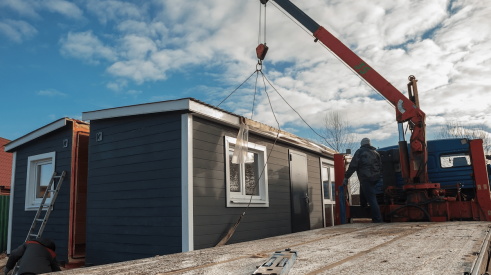If history has taught us anything, it’s that the U.S. housing industry isn’t easily disrupted.
Sure, innovation has crept in (think PEX pipes and plated roof trusses, among many others), and there will always be progressive builders willing to invest in proprietary solutions to alleviate particular pinch points. But as an industry, housing is rather stodgy, entrenched in an infrastructure of widely disparate players and business models operating at a local level, rigid materials supply chain protocols, and legacy labor skills pinned to outdated building methods, to name a few sacred cows.
It’s a $32 trillion aircraft carrier with a million planes in all shapes and sizes. Expecting it to turn en masse toward a sincerely disruptive change is, frankly, a fool’s errand.
So forget about all that “adapt-or-die” talk. Housing isn’t a taxi service, the hotel business, a video store, razor blade manufacturing, or even brick-and-mortar retail—all of which have been truly humbled in recent years by new business models from emerging players that have swiftly affected widespread change.
Even so, your home building business likely confronts real issues right now that threaten your profitability, productivity, and business sustainability. And while those thorns are more or less specific to your operation, not necessarily shared to the same degree (or perhaps at all) among your builder brethren, they do require attention—and likely innovative solutions that challenge, if not fundamentally change, your status quo.
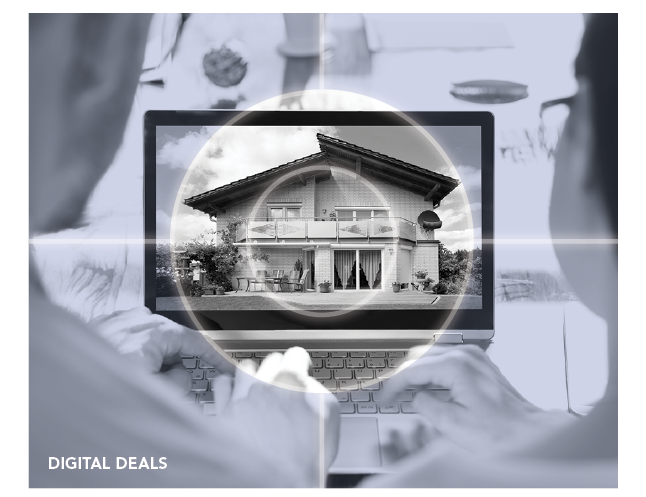
Digital Deals
What is it? The ability for consumers to conduct an entire real estate transaction online.
What does it change? Every player and process along the real estate transaction value chain.
What’s driving it? “On-demand” and independent consumer preferences and expectations; advancing technology; increasing consumer trust in online services.
Impact on home builders: Faster and more reliable closings; greater focus on new housing by real estate agents.
What’s going on in the resale market, where 89 percent of home sales happen, could be (or perhaps should be) considered truly disruptive in the Airbnb/Uber sense of the word. And that’s good news for home builders.
Aggressive startups with consumer-driven, tech-powered, and increasingly well-financed business models (think Zillow, Offerpad, Compass, and DocuSign, to name a few) are on the cusp of collectively delivering an end-to-end real estate transaction entirely online and thereby rewriting the rules of residential property sales.
“We’re evolving traditional tools in response to consumer needs, expectations, and experiences,” says Cortney Read, director of communications and outreach at Phoenix-based Offerpad, one of a growing number of so-called iBuyers that give consumers a streamlined, primarily online option for selling or buying a home—and that currently nets the company $135 million in transaction value per month.
Meanwhile, online transaction and document management platforms such as DocuSign (financed in part by the National Association of Realtors before going public last year) and Dotloop (purchased by Zillow in 2015 for $108 million) replace multiple, often time-consuming and confusing in-person, paper-based processes with digital documents and signatures along the transaction path.
For new-home builders, the shift to digital platforms and online services appears to help, not hurt, their cause. Listing aggregators (aka portals), led by Zillow, with 188 million monthly users at last count, now offer builders the opportunity to promote their homes alongside resales, while iBuyers are starting to engage the new-home realm as well.
Read says Offerpad increasingly fields calls from builders looking to quickly clear a prospective buyer’s contingency to close a new-home sale—a referral that nets a 1 percent commission for the builder.
Another iBuyer, Opendoor, launched a pilot program in Las Vegas last year with Lennar, marrying its quick-buy business model with the builder’s move-in-ready homes. The program recently extended to all builders in Opendoor’s 18 markets.
“It traditionally takes about 90 days to sell a house, but consumers expect it to take less than a month,” Read says. iBuyers are addressing this disconnect with cash offers for as-is homes that usually close within three weeks.
Offerpad also allows home sellers to change the closing date of their sale to accommodate delayed delivery of a new home (should that ever happen), among a growing number of real-estate–related services.
The diminishing relevance of real estate agents and traditional brokerages, which NAR’s 2015 report on industry disruption assessed as entirely probable and a “danger” to its future by 2020 (and a 2018 J.D. Power & Associates report confirmed) logically leads to a resurgent interest among real estate pros in the new-home segment.
Why? Not only are sales of new homes expected to increase at a higher rate than existing homes this year, according to Fannie Mae, but builders are less inclined than existing home sellers to give up the personal touch of on-site agents to sell their homes.
With that, new-home buyers more likely appreciate live and local representation to navigate and negotiate a builder’s options, pricing, and terms, which often are more complex than for an existing home.
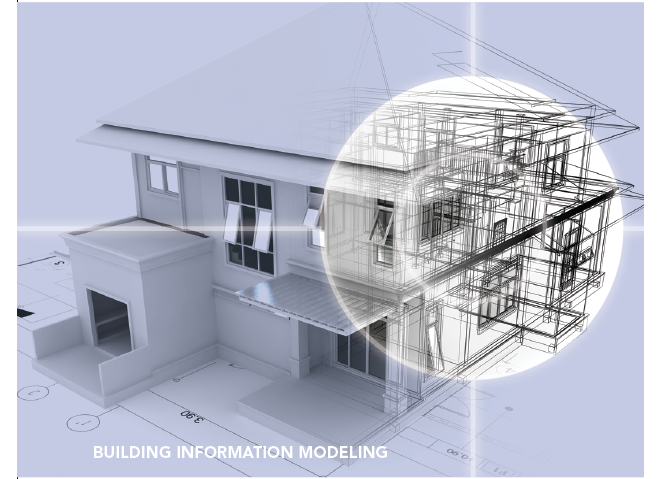
Building Information Modeling (BIM)
What is it? A digital prototyping technology that enhances three-dimensional computer models of a home beyond a simple visual representation.
What does it change? The operational processes, output, and accuracy of construction drawings, specifications, options, and cost estimates; new-home marketing.
What’s driving it? Construction cost inefficiencies and shrinking profit margins; consumer demand and expectations for more sophisticated and personalized marketing.
Impact on home builders: More accurate materials and labor cost estimates; faster plan changes; reduced production waste and contingency allowances; improved marketing; fewer model homes.
Building information modeling, or BIM, is neither a new technology nor unknown to home builders, it just has a messaging problem. Initially and often touted as an all-or-nothing panacea for a litany of inefficient operational processes, with unrealistic claims of productivity gains and heady cost savings, BIM was too expensive, too complicated, too big, too everything to gain much traction in the smaller-scale realm of residential construction, where digitization is relatively rare and IT spending averages less than 1 percent of revenue.
But in reality, BIM offers the perfect pool for home builders to dip their toes in next-gen technology, with multiple points of entry at the shallow end. “We encourage builders to start with a small win,” says Tim Beckman, director of customer-facing software at Simpson Strong-Tie in Pleasanton, Calif., which has brought BIM to about 50 home builders under the CG Visions brand name. “You don’t have to solve every riddle now.”
If your pinch point is a backlog in the drafting department, as it was for Pennsylvania builder S&A Homes, BIM transforms a paper-based, 2D process into a digital protocol that streamlines plan changes with greater accuracy.
“We immediately felt the impact in the quality of our drawings and turnaround time,” says Bob Shoemaker, the builder’s construction technology services manager, who saw plan changes come through in 10 days with BIM instead of six to eight weeks in the 2D world.
If you’re looking for ways to impress prospective buyers, BIM-generated 3D models enable not just a 360-degree spin, but also photo-realistic virtual reality (VR) walk-throughs of finished homes and accurate, real-time options costing, among other wow factors.
That capability allowed Georgia-based Edward Andrews Homes to sell a new townhouse community still in the framing stage, eschewing model homes for BIM versions of its units on touch-screen kiosks in the sales center.
Tired of subs squabbling over conflicts in the field and budgeting for contingencies to cover the cost of inevitable rework? Because every object in a BIM model accurately represents its real counterpart in application, the design team can adjust—and verify—the structural layout to avoid run-ins with ducts or plumbing stacks before anything goes out to bid, much less gets to the field. “Some of our builder clients operate with less than one-half of 1 percent contingency,” Beckman says.
And what about claims that BIM integration brings the operation to a standstill? Not so, Shoemaker says. S&A hired then-CG Visions to digitize its top 20 plans and the associated options packages, and brought on new people at a measured pace to get trained and gain proficiency at minimal risk. “We needed to focus on production and couldn’t afford to slow down,” Shoemaker says.
But this benefit is true: No matter how or why a builder comes to BIM, the digitization of plans and specifications enables the platform to help address the next pinch point.
S&A, for instance, now uses the technology to more accurately cost-estimate materials based on current prices and precise quantities, which also allows them to instantly cost out options and upgrades selected by buyers.
“Taking the first step [with BIM] opens up other operational functions to what the future holds,” Beckman says, “whatever it is and whenever it occurs.”
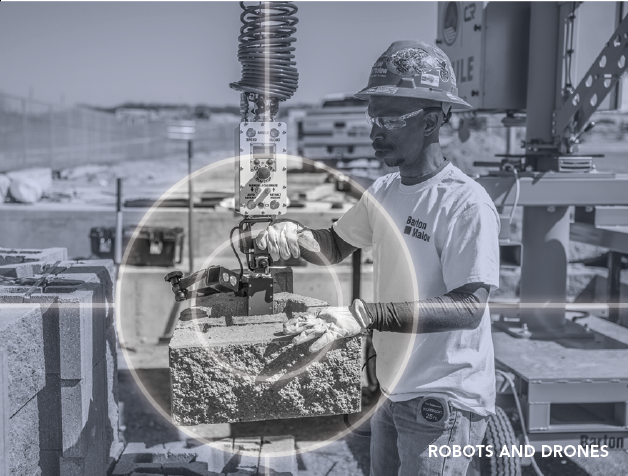
Robots and Drones
What is it? The automation of construction-related tasks.
What does it change? The labor for repetitive, predictable, or dangerous work; inspections and progress reporting.
What’s driving it? Construction labor shortages; worker safety; desire for greater productivity and profitability.
Impact on home builders: Minimal to date, but gaining legitimacy with real-world experience and refinements to suit smaller-scale building operations and projects.
The future of housing construction is not a legion of human-like robots hammering 16d shiners into stud walls, so get that picture out of your head … and replace it with a mule.
More specifically, the MULE (pictured above), is an automated arm that grips, lifts, moves, and holds CMUs in a state of weightlessness for masons to more precisely, quickly, and safely manage their placement. Invented by Construction Robotics, in Victor, N.Y., the MULE (short for Material Unit Lift Enhancer) is already on jobsites, literally doing the heavy lifting—an average of 2 ½ tons—that a block mason typically handles in a day.
“We’re already getting questions about what else it can move,” says Chris Raddell, a consultant with the company, which also is in talks with block manufacturers to design larger CMUs to meet the MULE’s 135-pound lifting capacity (the average block weighs about 35 pounds), thereby increasing block-laying productivity without adding (or risking) human labor.
The MULE is just one example of construction automation. There are bots on the market for demolition and deconstruction, bricklaying, power washing, jackhammering, painting, and other repetitive, difficult, dangerous, or mind-numbing tasks on a jobsite that require more muscle than skill.
Consider the bot from Doxel.ai, a Palo Alto, Calif., startup. The Roomba-size tank-like autonomous vehicle uses a swivel sensor to scan a building under construction, transmitting data that verifies installation accuracy and job progress. The result: Problems fixed before they’re covered up—not later (or never)—thus boosting productivity and profitability.
On-site inspections also are of increasing interest for drones, those unmanned quadcopters currently under regulatory scrutiny for pilot licensing and privacy issues. Equipped with a high-resolution camera, a drone can scout all or selected parts of a project in progress—above, below, and in places humans can’t safely or easily go—to deliver a more comprehensive picture of the project and its parts.
But there is a reality check: Construction Robotics’ MULE is a $60,000 piece of machinery; its bricklaying brother from the same mother, SAM (Semi-Autonomous Masonry) system, goes for half a million. And while SAM also is built for the jobsite, Raddell admits the current version is best for a large commercial or industrial building and is too unwieldy to move in a house-to-house scenario and see a reasonable return on investment.
So, despite recent on-site inroads, the bulk of robots for construction are finding their way into factories, where production potential is higher and both human labor and maintenance are lower in climate-controlled, even-terrain, easily-accessed indoor environments.
“That’s where the payback starts to make sense for a home builder,” Raddell says. Of course, that assumes a whole other sea change in housing.
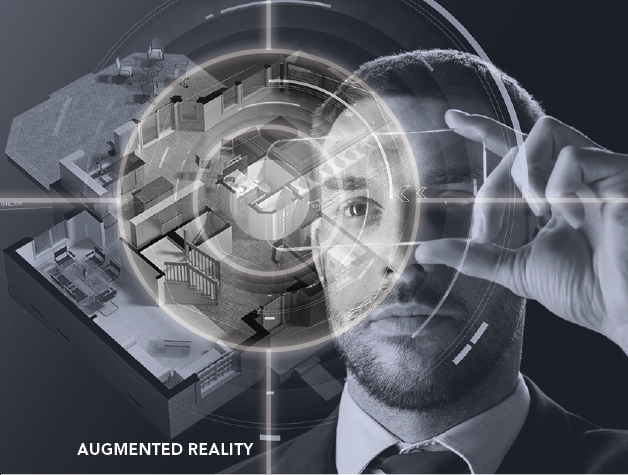
Augmented Reality
What is it? Overlaying real or virtually real environments with digital content.
What does it change? The homebuying experience for consumers.
What’s driving it? On-demand consumer expectations for digital information.
Impact on home builders: A new and techy way to deliver marketing and sales messages and to engage prospects more deeply.
If you think the latest virtual reality (VR) walk-throughs of new homes are cool, you aren’t alone.
“VR has moved much more into the mainstream,” says Christopher Brown, principal with NEXT New Homes Group, in Roseville, Calif., a company on the leading edge of new-home marketing technology for home builders and developers. “The focus has shifted to augmented reality.”
Before you blink again, or write off Brown’s assessment as a sales pitch for his firm’s services, consider that augmented reality (AR) is actually more attainable, affordable, and arguably more effective as a marketing tool than VR, even with the latter’s upward trend in quality and downward slide in price. In fact, you probably have an app or two on your mobile device that uses AR.
That’s because the AR starter kit begins with your existing content, such as brochures, videos, on-site signage, and option packages. Through one of a growing number of AR apps, the technology is “plug and play,” Brown says. “Most builders have a baseline of content to get started right away,” and then build out as they see and learn the technology in action.
Consider this scenario: Through the same AR app in which you loaded your content—say, a video greeting from a sales associate or a BIM-driven walk-through of a model—prospective buyers driving through the neighborhood during off-hours can point their mobile devices to your signage and view that content; a 24/7 resource that’s far more engaging than words and renderings on a flat surface.
In your models, the same technology can be applied to options and upgrades. Using an app on a tablet device, buyers can see and select finishes for selected items—cabinets, flooring, faucets—in real time and in application, and can create a profile to keep those specs for future reference … and for your records. “Now you have an emotionally invested buyer who is much more likely to see it through,” Brown says.
Of course, you can overlay your AR content to a VR tour, upping the ante of that investment and boosting your online presence, where 90 percent of buyers search and 81 percent want interactive floor plans, according to a recent study by the interactive marketing company Bokka Group.
But don’t believe the hype that the technology allows you to jettison your model homes. “AR and VR are more about changing how we sell homes than getting rid of models,” Brown says. Builders using the technology may be able to get down to one or two models instead of a handful or more in each community, he points out, but they need to maintain those necessary touch-points in the sales process. “In housing, everyone shops on data, but they still buy on emotion,” Brown concludes.
What Now?
Regardless of whether you’re inspired to delve deeper into any of these technologies for your business, the fact is they’re coming … and probably faster than innovations in the past.
That’s because they’re primarily driven by changing consumer preferences and expectations, including individual empowerment bordering on entitlement, and an increasing trust in online services—a power that trumps even the most severe industry ills, such as skilled labor shortages, production inefficiencies, on-site safety, and fickle profitability.
With that, these particular innovations also are leveraging one another toward a collective sea change for housing.
“Disruption in this industry is like beach erosion, not a tsunami,” says Clelia Peters, co-founder and partner at MetaProp, in New York, an investor and promoter of real estate-related technology (aka “proptech”). “You may not be aware it’s happening at first, or for a long time, but eventually it picks up speed and all of a sudden it’s here,” Peters says.
Advertisement
Related Stories
Off-Site Construction
Utah Passes Bill to Regulate Modular Construction at the State Level
Goals for housing innovation and affordability meet in the Utah's passage of a new bill that establishes a statewide modular construction program
Awards
Ivory Innovations Announces 25 Finalists for the 2024 Ivory Prize
The finalists for the prize demonstrate innovative, scalable solutions for advancing housing affordability
Business Management
AI in Home Building ... What Now? What Next?
Artificial intelligence is coming to home building. How can builders use AI in new-home construction? Start with this primer




